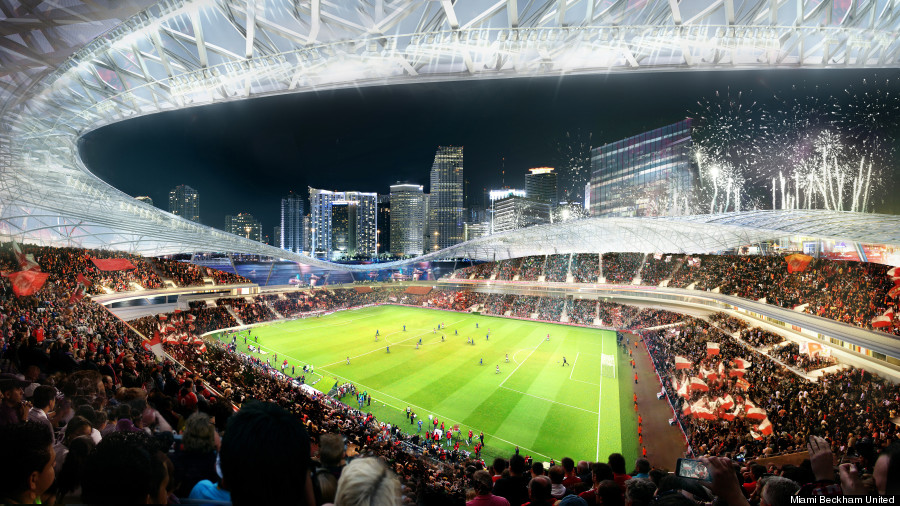 |
| Please click images to enlarge. |
The first time we heard David Beckham's first choice for a new MLS stadium was at PortMiami we thought, are you nuts? Gridlock is a common occurrence in downtown Miami as it is whenever something major is happening there. You don't want to be caught anywhere near the American Airlines Arena when the Miami Heat are playing there. Or anything is booked there. When the Arsht Center a few blocks up the street has got something going on at the same time, fagedabou getting anywhere on time downtown. It's like being caught in the Bermuda Triangle with no chance of escaping.
Then Michael Putney, one of the area's great newsmen, reported that All Aboard Florida promised to run trains into PortMiami for soccer fans if the stadium is built there. Hmm... That means anyone living north of the stadium-- anyone as far away as Orlando-- could hop a train to see the game. This would only happen at this venue because the Dolphins and Marlins stadiums aren't anywhere near mass transit. As far as we're concerned, this is a game changer for seriously considering this location as the future home of the Miami Whatevers (we're partial to Miami United because it implies-- whether or not it's true-- we as a group of people actually are united and not separated by our need to hang on to our differences and allegiances to our "home" countries and, of course, Manchester United was Beckham's home team).
As usual for MVB, we would expect our elected officials to require that the stadium has an iconic design. We favor an "less-is-more," open-air "bowl" that cantilevers out over the water and the train tracks leading into the port. Views of the downtown skyline should be breathtaking. Restaurants and cafes would face the water and docks. In this site, it becomes more unique in that fans could arrive by boat.
But what about the other half of the population, the ones who live south of the train tracks? Well, they can take MetroRail, switch to MetroMover and then walk across Biscayne Boulevard and over the bridge to the stadium. Not perfect, but a little walking might be the only exercise some of these people may get so it's all good.
A final inevitable solution to solving the traffic and parking nightmare downtown is quite radical. Although removing the parking islands in the middle of Biscayne Blvd has been talked about for decades, may we suggest that removing and realigning the northbound lanes become priority. In our approach, Bayfront Park would replace those lanes which would be moved westward (replacing the parking island). Finding new land for parks in downtown Miami is pretty much impossible but suddenly, acres and acres can now be added to the existing park (see before and after pictures below). In this rendering, we have planted royal poinciana trees along the western boundary of the park. This affords a beautiful and natural buffering zone between the hustle and bustle of Biscayne Blvd and the tranquility of the park. And since this will be a major endeavor that will take months to complete, we are humbly suggesting that an underground parking garage blocks long be dug at the same time beneath the new park land and road. It's possible thousands of cars could be parked there out of sight. This extra parking will help support Bayside, downtown, and the stadium.
 |
Biscayne Blvd and Bayfront Park today.
|
 |
| Biscayne Blvd and Bayfront Park tomorrow. |








